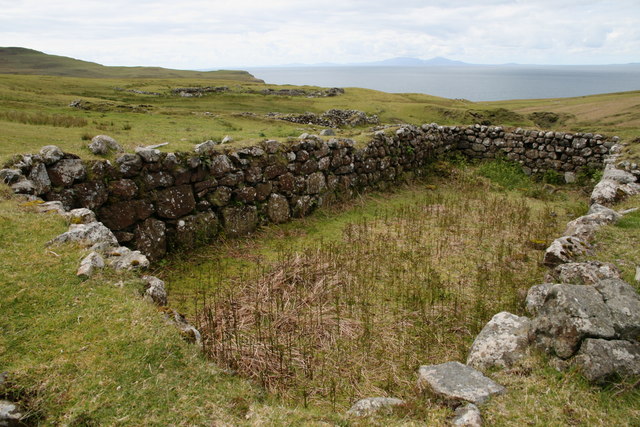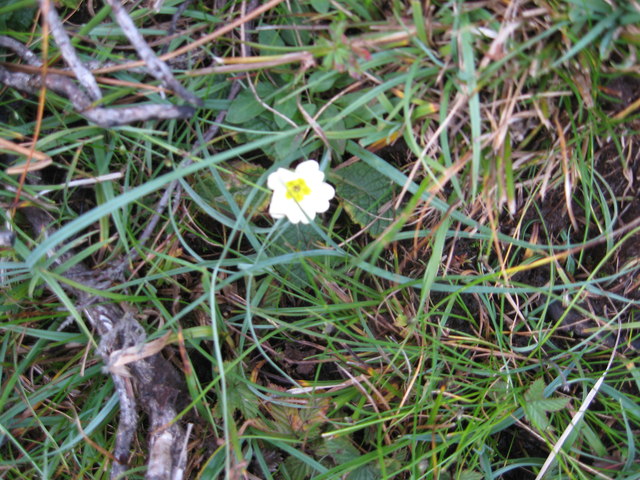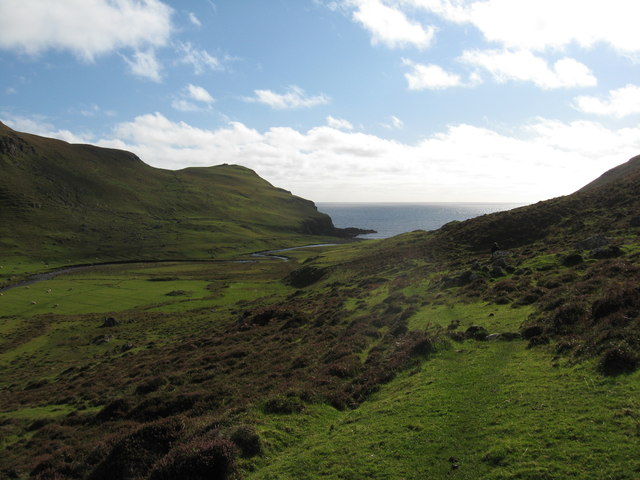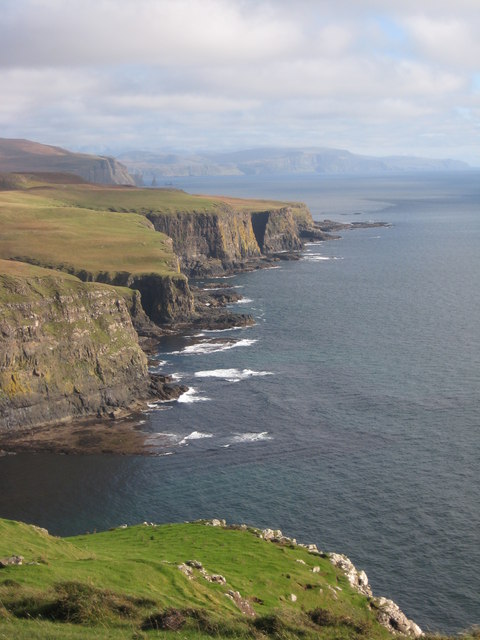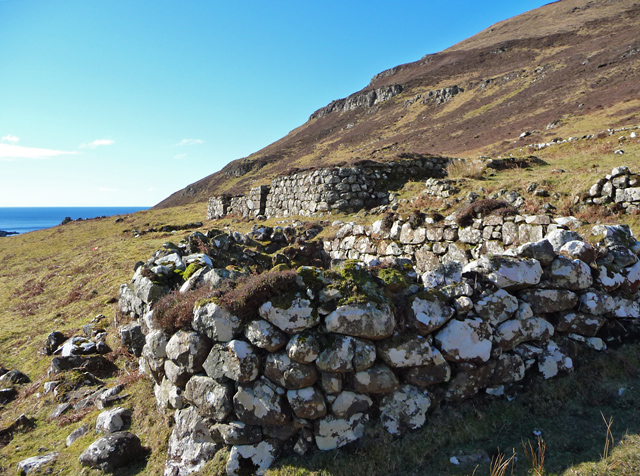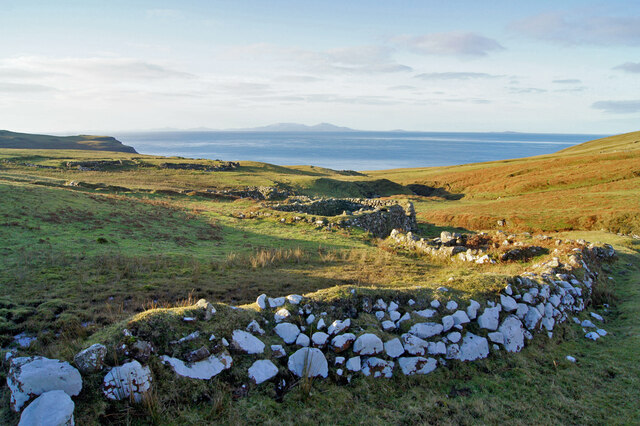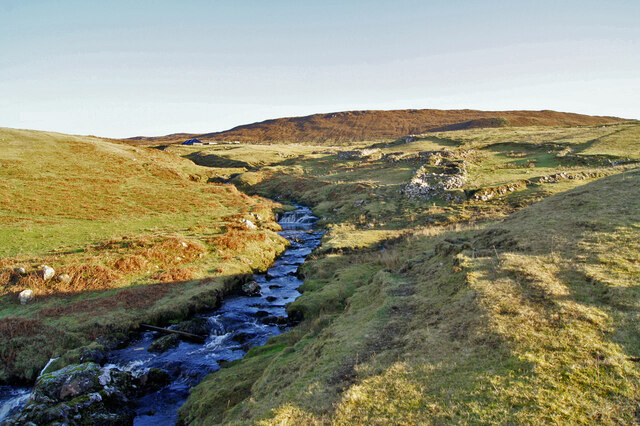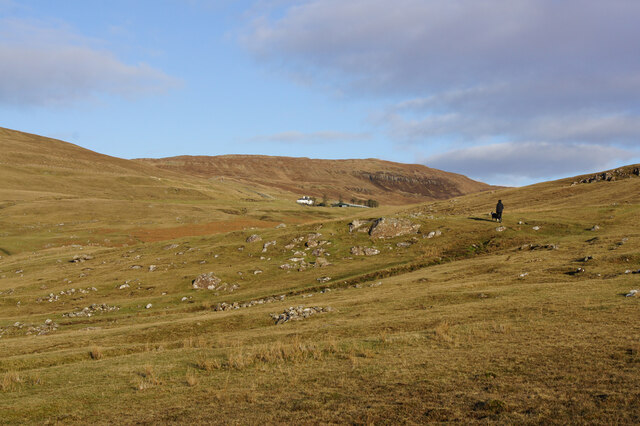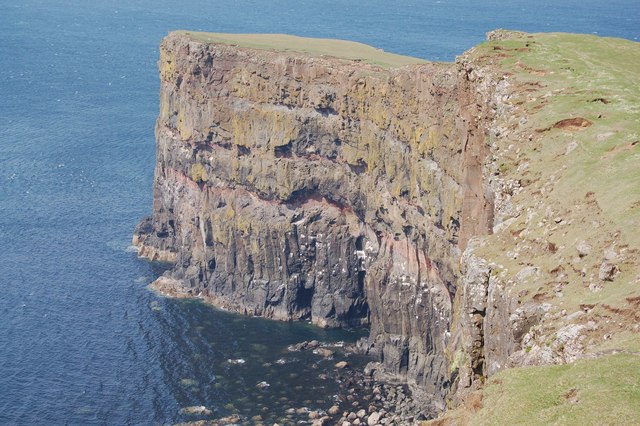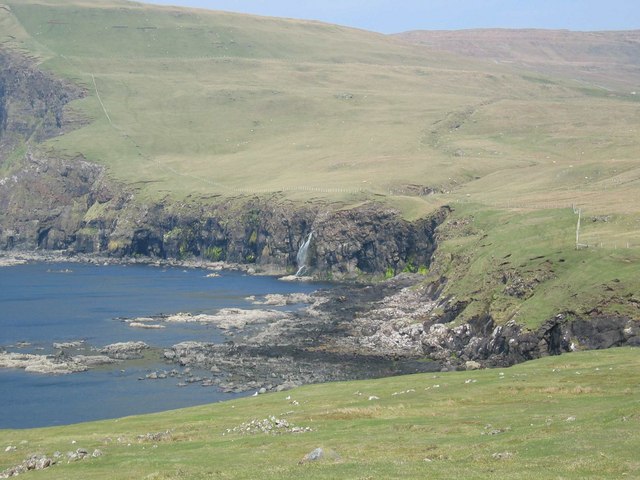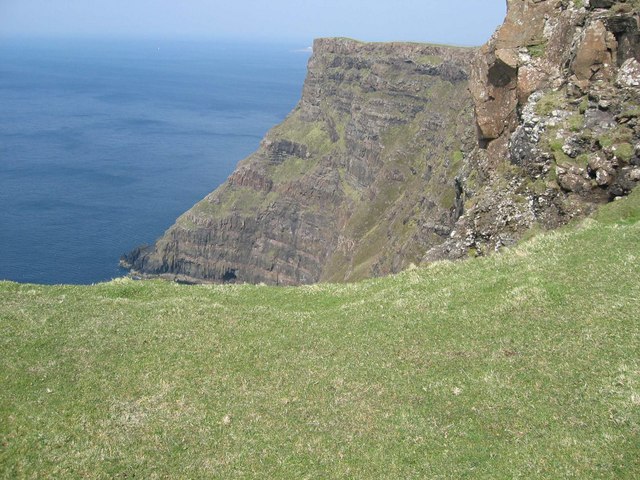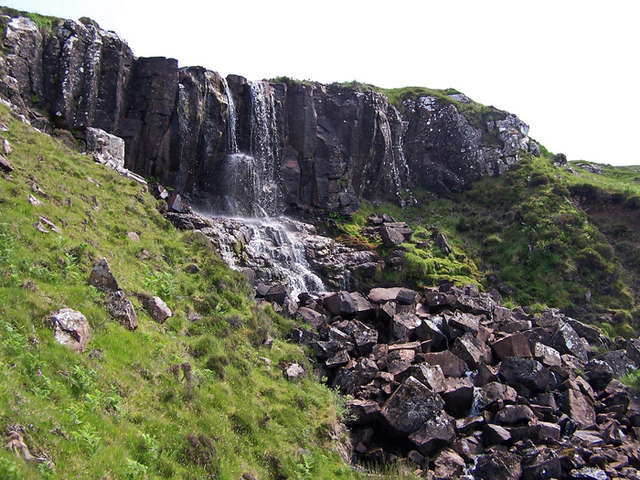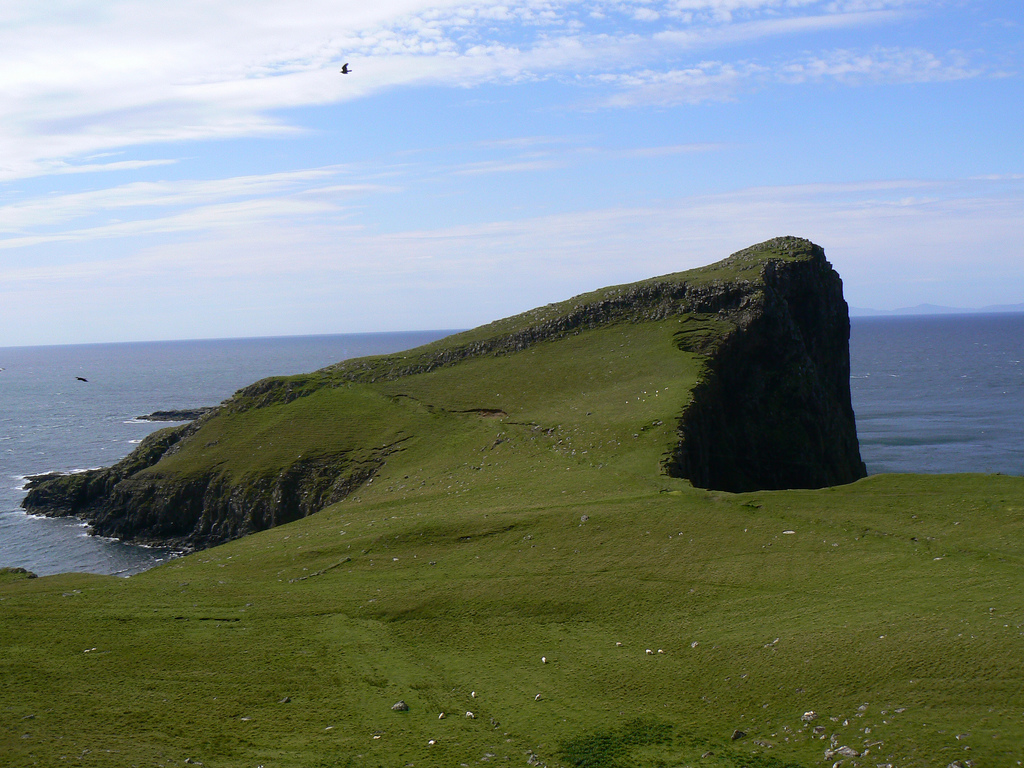Gob na Hoe
Coastal Feature, Headland, Point in Inverness-shire
Scotland
Gob na Hoe
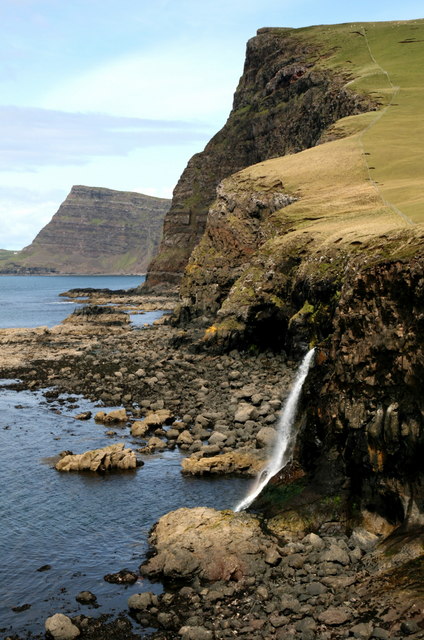
Gob na Hoe is a prominent headland located in Inverness-shire, Scotland. Situated along the beautiful coastline, it serves as a notable point of interest for both locals and tourists. The name "Gob na Hoe" translates to "the mouth of the bay" in English, which accurately describes its geographical location and shape.
This headland is characterized by its rugged and rocky terrain, jutting out into the North Atlantic Ocean. The cliff faces of Gob na Hoe are formed from a combination of ancient rock formations, including sandstone and shale, which have been eroded over time by the relentless crashing waves. The result is a striking coastal feature that showcases the power and beauty of nature.
Gob na Hoe offers breathtaking panoramic views of the surrounding landscape. From its elevated position, visitors can admire the vast expanse of the ocean, the nearby sandy beaches, and the rolling hills of Inverness-shire. On a clear day, it is even possible to catch a glimpse of the distant mountains in the Scottish Highlands.
The headland is also home to a variety of plant and animal species, making it an important ecological site. Seabirds such as gulls and fulmars can often be seen nesting on the cliffs, while seals and dolphins occasionally swim in the waters below.
Overall, Gob na Hoe is a captivating coastal feature that combines stunning natural beauty with diverse wildlife. It is a must-visit destination for anyone exploring the Inverness-shire area, offering a glimpse into the untamed and awe-inspiring Scottish coastline.
If you have any feedback on the listing, please let us know in the comments section below.
Gob na Hoe Images
Images are sourced within 2km of 57.382489/-6.730748 or Grid Reference NG1542. Thanks to Geograph Open Source API. All images are credited.
Gob na Hoe is located at Grid Ref: NG1542 (Lat: 57.382489, Lng: -6.730748)
Unitary Authority: Highland
Police Authority: Highlands and Islands
What 3 Words
///pens.nanny.extremes. Near Glendale, Highland
Nearby Locations
Related Wikis
Ramasaig
Ramasaig is a small township on the western shore of the Duirinish peninsula, on Dunvegan, Isle of Skye and is in the Scottish Highlands and is in the...
Borrodale
Borrodale (Scottish Gaelic: Borodail) is small hamlet on the Isle of Skye, in the Inner Hebrides of Scotland. Borrodale is part of Glendale and the Glendale...
Eas Mòr, Durinish
Eas Mòr is a waterfall on the Duirinish peninsula of the island of Skye in Scotland. It lies on the Allt Mhicheil, a tributary of the Dibidal River below...
Neist Point
Neist Point (Scottish Gaelic: Rubha na h-Eist) is a viewpoint on the most westerly point of Skye. Neist Point Lighthouse has been located there since...
Have you been to Gob na Hoe?
Leave your review of Gob na Hoe below (or comments, questions and feedback).
